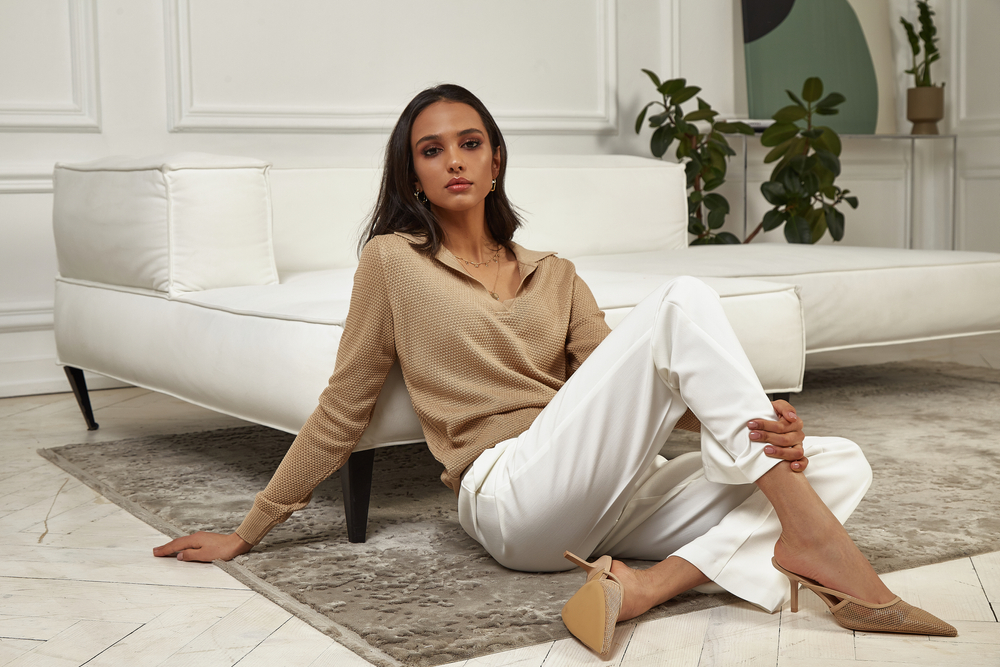
Photography is a powerful medium that has the ability to capture moments, emotions, and stories in a single frame. When it comes to photoshoots, one of the most important aspects is the art of posing. Whether you are a professional model or someone who simply loves to be in front of the camera, mastering the power of modelling can take your photoshoots to the next level. In this article, we will delve into the art of posing and explore how it can make a world of difference in creating captivating photographs.
Understanding the Role of Posing in Photography
Posing is much more than just standing or sitting in a specific position for a photograph. It is an art form that involves using body language, facial expressions, and gestures to convey a particular mood, story, or concept. The way you pose can influence the overall composition, mood, and impact of the photograph. It can transform a mediocre photo into a work of art, creating a visual narrative that resonates with the viewer.
Creating a Connection with the Camera
One of the key aspects of modeling is establishing a connection with the camera. When you look into the lens, it is essential to convey emotions and engage with the viewer on a deeper level. The eyes, as they say, are the windows to the soul, and they can captivate an audience when used effectively. By mastering the art of eye contact, you can draw the viewer into the photograph, creating a sense of intimacy and connection.
Body Language and Expression
modeling (or modelling) is all about body language and expression. Every movement or pose has the potential to communicate a specific message. Each angle at which you position your body can convey a different emotion or story. For instance, a relaxed and open pose can evoke a sense of ease and comfort, while a more dynamic and decisive pose can convey power and confidence. Don't be afraid to experiment with various poses and gestures to find ones that best express your desired message.
The Importance of Practice
Like any other skill, modeling requires practice. Becoming comfortable in front of the camera and perfecting your poses takes time and effort. The more you practice, the more you will be able to discover your best angles, learn how to convey different emotions, and develop your unique style. Consider working with photographers, participating in workshops, or even practicing in front of a mirror to enhance your modeling (by models) skills.
Collaborating with Photographers
While posing is rooted in your individual expression and body language, collaborating with photographers is crucial to creating captivating photos. When you work with a photographer, it is essential to establish clear communication and understanding. Share your ideas, concepts, and preferences, and allow the photographer to guide you. A good photographer will provide guidance, suggest poses and angles, and make you feel comfortable throughout the shoot. Remember that modelling (or modeling) is a collaborative process, and the synergy between you and the photographer can elevate the final result.
Frequently Asked Questions
Q1: How can I find my best angles?
A1: Finding your best angles takes time and practice. Experiment with different poses and angles, and pay attention to how the light falls on your face and body. Take note of the positions that flatter your features and make you feel confident.
Q2: How do I convey different emotions through poses?
A2: The key to conveying emotions through poses is to focus on your body language and facial expressions. Experiment with different postures, gestures, and expressions to evoke the desired emotion. Practice in front of a mirror to see how subtle changes can transform your look.
Q3: Can I learn modeling without professional training?
A3: While professional training can provide valuable guidance and insights, it is possible to learn modeling without formal training. Engage in self-study, observe professional models, and practice posing on your own. Participating in photoshoots can also help you gain experience and confidence.
Q4: How should I prepare for a photoshoot?
A4: Preparation for a photoshoot is essential. Research the concept or theme of the shoot, plan your outfits, and communicate with the photographer to align expectations. Get enough rest, stay hydrated, and practice poses beforehand to feel confident during the shoot.
Q5: What should I look for in a photographer?
A5: When choosing a photographer, look for someone whose style aligns with your vision. Review their portfolio to see if their previous work resonates with your aesthetic. Communication and rapport are key, so choose a photographer who makes you feel comfortable and can guide you during the photoshoot.
In conclusion, the art of posing is a powerful tool in creating captivating photoshoots. By understanding the role of posing, establishing a connection with the camera, using body language and expression effectively, practicing, and collaborating with photographers, you can master the power of modeling. Remember, modeling is not just about striking a pose, but about telling a story and conveying emotions through the art of photography.
Other useful resources
- https://en.wikipedia.org/wiki/Modeling_agency
- https://en.wikipedia.org/wiki/Category:Models_by_modeling_agency
- https://en.wikipedia.org/wiki/Category:Modeling_(profession)
Set the number of columns in the parameters of this section. Make your own website in a few clicks!